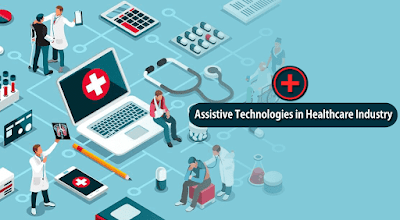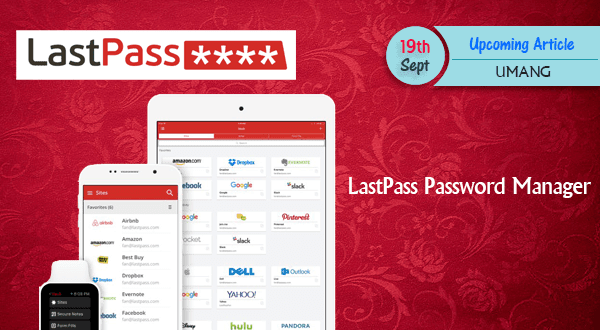Healthcare Assistive Technology is immensely useful for disabled
individuals helping them in performing tasks that otherwise might have
been difficult or impossible for them. It comprises mobility devices,
like wheelchairs, walkers, and also hardware, software, and peripherals
that assist people with disabilities in accessing computers and other
digital technologies. For instance, people with limited hand function
can use a keyboard with large keys or a special mouse for operating a
computer, whereas blind people may use software that reads text on the
screen in a computer-generated voice, besides people having a low vision
can use software that enlarges the screen content, and deaf people may
use a TTY (text telephone).
Meanwhile, in the case of
people with speech impairments, they can use a device that speaks out
loud as they enter text via a keyboard. The importance of assistive
technology has seen a great rise in the recent years. Today there is a
wide variety of assistive technologies available, offering the
opportunity to virtually everyone to access information technology (IT).
However, just having proper healthcare assistive technology doesn't
assure access to it, as the accessibility depends on the accessible
design. It is vital to design and create IT products in a manner that
enables all users to access them, even those using assistive
technologies.
How Is This Technology Helping Disabled Learners?
Well,
Healthcare Assistive technology can be classified as a device or a
system providing people with practical solutions to everyday life
activities. It promotes higher independence and safety by enabling
people to perform tasks that they earlier faced difficulty doing or
failed to accomplish on their own.
The healthcare sector has made use of various types of assistive devices that majorly operate with Artificial Intelligence and Machine learning technology. These devices with the help of technology has made lives easier and lesser dependent on others. Thus, even with assistive devices people do not need to feel like a burden that gives them mental piece.
Some of the ways in which these automated assistive devices are bringing about the changes in the daily lives are:
- Helps in Daily Living-
It can be modified eating utensils, dressing aids, page-turners,
adapted books, pencil holders, and adapted personal hygiene aids.
- Sensory Aids for Hearing or Vision Impaired-
It can be done via visual alerting systems, Braille, hearing aids,
magnifiers, large print screens, and speech/telecommunication output
devices.
- Seating & Positioning Aids Providing Body Support- It can be adapted to seating, cushions, wedges, standing tables, cushions, positioning belts, and braces.
- Mobility Aids-
It enables people to move within their environments via modifications
of vehicles for travel, scooters, canes, walkers, crutches,
electric/manual wheelchair.
- Recreational Aids-
This allows them to participate in cultural/social events and sports,
like adaptive controls for video games, cuffs for grasping
paddles/racquets, seating systems for boats, and audio descriptions for
movies.
- Home/Workplace Modifications- It
is done through structural adaptations that reduce or remove physical
barriers such as lifts, ramps, automatic door openers, bathroom changes,
and expanded doorways.
- Alternative/Augmentative Communication Devices-
These assist people having speech impairments or low vocal volume to
communicate like communication software, speech-generating devices, and
voice amplification aids.
- Prosthetics & Orthotics- These can be augmentation or replacement of body parts with artificial limbs or other orthotic aids, like braces or splits.
- Computer Access Aids-
These consist of modified/alternate keyboards, voice to text software,
light pointers, switches activated by voice/sound/pressure, head sticks,
special software, and touchscreens.
- Environmental Control System-
These are helpful to people in controlling a number of appliances like
switches for appliances, such as TV/telephone, and these get activated
by breath, eyebrows, or pressure.
Assistive Technology for the Deaf and Hearing Impaired
The
software is programmed for deaf and poor-hearing ability people with
programming capabilities for assistive listening devices comprising of
direct audio inputs, frequency modulation, room-limited infrared
systems, and induction loops. Assistive listening systems and smart
hearing aids are also programmed with noise reduction algorithms,
automated settings control based on environmental conditions (like wind
& other feedback), remote controls, and Bluetooth compatibility to
access phones' calling & media audio.
Assistive Technology for the Blind and Visually Impaired
The
blindness & low-vision assistive technology solutions comprise
smart magnifiers, GPS devices with descriptive audio navigation, talking
& braille watches, text-to-speech readers, and spatial-aware
mobility aided with IoT functionality (wheelchairs & smart canes).
Multilingual screen reading software is developed with advanced
resolution and color-contrast settings, and then there is voice-command
computer software for internet browsing, document management system,
device integration, and easy installation. The services include
interfacing braille displays, embossers, keyboards, printers with
desktop & mobile OS.
Assistive Technology for Communication
In
this scenario Augmentative & Alternative Communication (AAC)
applications and embedded device software are developed, thus providing
communication solutions to those who suffer from cognitive illnesses
& learning disabilities (ALS, TBI, cerebral palsy, dyslexia,
autism). Software for speech-generating devices (SGD) is designed with
customizable selection sets, direct & indirect access methods
(comprising of switch access scanning) encoding options, predictive
text, digitized & synthesized speech outputs, and accelerated
communication protocols.




0 Comments